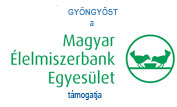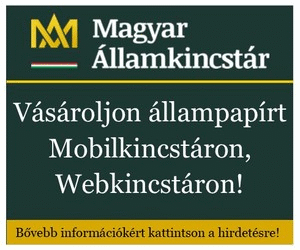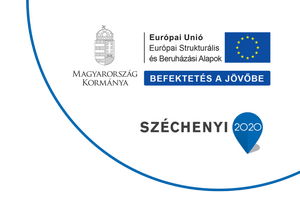GYÖNGYÖS VÁROS POLGÁRMESTERE 2021. április 16-án rendeletet alkotott GYÖNGYÖS VÁROSI ÖNKORMÁNYZAT 2021. ÉVI KÖLTSÉGVETÉSÉNEK módosításáról.
GYÖNGYÖS VÁROS POLGÁRMESTERE 2021. március 26-án rendeletet alkotott az Önkormányzat tulajdonában lévő lakások és nem lakás céljára szolgáló helyiségek bérletének szabályairól, a lakbérek mértékének megállapításáról szóló 1/2013.(II.4.) önkormányzati rendelet módosításáról.
GYÖNGYÖS VÁROS POLGÁRMESTERE 2021. február 26-án rendeletet alkotott A PÉNZBELI ÉS TERMÉSZETBENI SZOCIÁLIS ELLÁTÁSOKRÓL szóló 9/2015.(II.27.) önkormányzati rendelet módosításáról.
GYÖNGYÖS VÁROS POLGÁRMESTERE 2021. február 26-án rendeletet alkotott GYÖNGYÖS VÁROSI ÖNKORMÁNYZAT 2021. ÉVI KÖLTSÉGVETÉSÉRŐL.
GYÖNGYÖS VÁROS POLGÁRMESTERE 2021. február 26-án rendeletet alkotott GYÖNGYÖS VÁROSI ÖNKORMÁNYZAT 2020. ÉVI KÖLTSÉGVETÉSÉNEK módosításáról.



History of the town
Gyöngyös, the second largest town of Heves county, the Gate of the Mátra is located at the meeting of the Great Hungarian Plain’ s northern border and the looming Mátra’s southern slopes covered with woods. The town is the cultural, economic and tourist centre of the region north-east from Budapest.
The name of the town is first mentioned as „Gungus” in 1261 then King Charles Robert granted Gyöngyös the status of a town in 1334 giving its inhabitants privileges. Owing to winemaking and viniculture, the trade routes crossing the town and the permanent market place, the town began flourishing soon also thanked for the Franciscans settled here.
From 1546 to 1687 Gyöngyös was occupied by the Turks but enjoyed a relatively high degree of protection since it became the private property of the Sultan’s viniculture and commerce, especially wine trading throve further here.
At the beginning of the 17th century industrial guilds appeared. The town played a significant role in the War of Independence led by Ferenc Rákóczi II. By that time most houses of the town had already been built in Baroque style.
Although viniculture and wine trading of the town and its surroundings were destroyed by phylloxera in the 1880’s, supplying with public services started, new roads were built, the whole town was beautified and prospered at the turn of the century. On 21 May 1917 a spark from the hospital’s washhouse set fire and the disastrous conflagration enveloped the town destroying 549 houses and 1400 outbuildings.11 people died in the catastrophe and 8000 citizens were made homeless. As there was a lack of water, it was transported from Vámosgyörk by train, the inhabitants tried to douse the flames with wine as well. Two days after the fire King Charles IV and his wife visited the town and made law to rebuild it moreover he gave financial assistance too. The whole country wanted to help Gyöngyös with donations to reconstruct the town, which began following the plans of László Warga, professor of architecture after the World War I. This reconstruction work offered Gyöngyös the present-day skyline. After 1945 the town expanded over the centre and new housing estates were built in the greenbelt so the relatively small downtown retained its charming atmosphere.
Sightseeing
We start our sightseeing at the centre of the town, the Main Square used to be called Market Place for centuries. It had been rebuilt first after the Great Fire of Gyöngyös in 1917 then the square gained its present appearance in 2000. The previous Town Hall located at the old market place besides the landowners’ and wealthy citizens’ houses of middle aged origin . These renovated buildings provide that particular, unified, peaceful townscape nowhere else can be seen in Hungary. The two storey Baroque building of the former Grassalkovich Mansion at 10 Main Square now houses the Town Library. In the gallery upstairs the permanent exhibition of paintings by Hermann Lipót and the Lajos Huszár Coin Collection are on display. Throwing a glance at the gate above we can see the ornamental Baroque coat of arms of Grassalkovich family.
On the other side we come to 11 Main Square, the classical building of the Orczy family which conceals particular values. The excavated Gothic hall of it is the oldest secular architectural relic. The neighbouring house at no.13 is the Town Hall .On its facade is the coat of arms of the town. Its relevant motifs – the golden Sun, the human faced Moon and the wolf - decorate three of those four fountains placed in the corners of the square. The significant motif of the fourth fountain in the south- east corner is grape referring to the Town of Grapes and Wine title was gained in 1984. The renewed ancient well situated in the south depicts the coat of arms of the twin towns of Gyöngyös- Ringsted in Denmark, Zeltweg in Austria, Kézdivásárhely in Romania, Pieksamakki in Finland and Sanok in Poland. The fountains as well as the well were made during the renovation in 2000, which was awarded Hild prize.
Going along 150 meters in Zsigmond Móricz Street from the square to the south in a little park you can see the statue Hussar Looking at His Sword by Zsigmond Kisfaludy Stróbl made in 1932 .It was erected in memory of The Würtenberg hussars who fought in the eastern battle-line during the World War 1. Names of settlements of Galicia can be read on the pedestal of the statue.
Walking along Rózsa then Sándor Kőrösi Csoma Street to the bank of Gyöngyös Stream there is the Baroque building designed by Jakab Fellner, which was originally the barracks of Nádor hussars led by Gábor Hertelendy from 1800 is now known as the County Hall. The last residents here were the Würtenberg hussars earlier mentioned. Its present-day appearance was gained in 1929 when the Ministry of Agriculture bought the building to use as a state stud-farm. This is the reason why it is commonly called Csődörös (Stallion) Barrack . Before continuing walking take a closer look at the facade of the building, the ancient coat of arms of Heves County.
Opposite the County Hall on the other side of the stream bank there is the classical building of the old Synagogue built by Károly Rábl , the son of the town between 1816-1820.It is now occupied by the local television. On the wall of the building a nice commemorative plaque to the memory of Jewish victims of World War II can be seen .The neighbouring new synagogue was constructed by Lipót Baumhorn and György Somogyi in 1930. In the centre of the cathedral- like building is the huge dome. The donkey- spined doors and windows, the entablatures and several little cupolas make the building so splendid. Tragically the great majority of 2071 Gyöngyös Jews- counted in 1941- fell victim to the holocaust in Auschwitz therefore the building has not been used as a synagogue any more .
Retracing your steps to the Main Square down Árpád Puky Street next to the Town Hall and the Orczy Mansion there is the former Heves County General Bank Co’s building at no.9 constructed by Valér Mende in 1911 which was one of the first ferro-concrete buildings of Hungary now houses the Hungarian Army Casino.
The building at no.8 was the residence of János Almásy, the sub-prefect of Heves county. As the memorial plaque says the inhabitants of the county gathered here after Almásy’s summons in October 1703 to join the Rákóczi ’s War of Independence. During the last 200 years the building has been renovated several times but from 1883 the house was owned by Kolos Hanák, a supreme court judge who was the freeman of Gyöngyös. His HK monogram can be seen on the wrought iron railing of the balcony.
The former residence of Ferenc Rákóczi II stood at no.2 where the prince held peace negotiations with Pál Széchenyi, the son of the town, the archbishop of Kalocsa in 1704.Only a stone door frame of the original building from 1731 was preserved . The house was replaced by the Commercial and Corporate Bank Co’s mansion designed by Dezső Frend but the entrance keeps the memory of the prince and the historical events.
In the northern part of the square at a four-road crossing stands the impressive two-steepled Saint Bartholomew Parish Church, the Big Church, of which present form is in baroque style. In its place once was a much smaller church in the second half of the 13th century. It was reconstructed first by Tamás Széchenyi, a nobleman of the town around 1300 then at the end of the 15th century it was rebuilt as one of the biggest gothic halled churches of Hungary. The only remaining parts of the gothic church are the large twin windows on both sides of the apse and the relic of the former bell tower wall built to the southern aisle. The old gothic church was reconstructed in baroque style between 1746 and 1756. The steeples were added later, the northern one between 1772 and 1773 while the southern one in 1815. During the great fire of 1917 the building was seriously damaged. Although it was partly restored soon but the huge steeples still need restoration. The painting of the baroque main altar shows the martyrdom of Saint Bartholomew, the patron saint of the church. The treasured rarity of the church is the gothic bronze baptizing pool from the 15th century standing on the southern side of the shrine.
Opposite the western main entrance of Saint Bartholomew Church King Charles Robert’s full statue by Pál Kő stands on a column on a round paved square built in 2000. The town’s coat of arms and the starting lines of the certificate granting the town rights to the settlement can be read on the column. The statue was raised by the town for the 650th anniversary of Gyöngyös being declared a town. The statue of Saint Stephen, the first Hungarian king by Pál Kő was made for the 1000th anniversary of the state foundation . The lion headed well by István Máté stands behind the statues. Its carvings show the most significant events of the town’s history.
Right behind the Saint Bartholomew church is the one storey baroque building of the former Jesuit then Fransiscan Grammar School today János Pátzay Music School. The first grammar school of the town was built in the 17th century, the new baroque building was constructed a century later.
At 3 Szent Bertalan Street stands the former Almássy mansion which is known today as the House of the Holy Crown. The Holy Crown of Hungary was guarded here three times between 1806 and 1809. The building is today the presbytery of Saint Bartholomew and houses the unique treasury of the church collected for centuries. During the World War II while the Soviet troops were staying in the town three priests hid the treasure under the southern steeple. Then the last living priest told the secret before dying in 1967.
This is the third richest and most considerable church exhibition of Hungary where one can see several chasubles, books, statues and goldsmith’s work of which twelve pieces are from the medieval period. The so-called pinhead chalices are unique examples of Hungarian goldsmith’s art.
From the treasury going along the memorial to the Hungarian Revolution of 1956 we continue our walking in Lajos Kossuth Street. At the beginning of it is the neo-baroque building of the Fire Station designed by Gyula Walder between 1924-1925 with the statue of Saint Florian.
On the corner of Mátrai Street and Kossuth Street stands the former Orczy Mansion today Mátra Museum. The baroque building built in the 18th century gained its present- day classicist facade in 1826 by Lőrinc Zofahl. The one- storey building fully renovated in 2005 is surrounded by a beautiful park which is guarded by two lions standing at the entrance. The biggest, nearly 200 years old Turkish hazel of Hungary can be found in the park as well. The museum’s exhibitions present the history of the town, the flora and fauna of the Mátra and the history of hunting. This is Hungary’s second largest natural science museum with its paleontological, geological and zoological collections. Apart from these, it is best known for the completely preserved mammoth skeleton found in 1949.
At the crossing of Lajos Kossuth Street and Koháry Street is the Saint Elisabeth’s church. The medieval building was renovated in 1994 when the crypt under the shrine was excavated. Its material can be seen in the Mátra Museum.
To the south from the church is the former hospital of the town where mostly the poor and the ill were cured then it was used by a school for almost one and a half century.
In front of the beautiful eclectic building of the Wine Palace stands Sándor Kliegl’s bronze work ,the Hoers of Gyöngyös, as a reminder of the vineyard workers of Gyöngyös. Today this is the largest winery of the town.
In the south-east part of the town centre on Barátok Square is the Franciscan Church and Monastery . According to the local traditions the Franciscan monks settled in Gyöngyös in the 14th century and finished building the gothic construction of the church in 1494.It was demolished several times in the past but the order rebuilt it each time. In the 18th century the church was reconstructed by the famous Italian architect, Giovanni Battista Carlone in baroque style but retained its gothic character with a single nave. The monastery was also built between 1701 and 1727 as one of the largest Franciscan monastery of Hungary. The roof , the two steeples and the monastery itself were damaged by the fire of 1904. The renovation was lead by Frigyes Schulek and Kálmán Lux. Inside the building is the 18th century chapel and altar of the Mater Dolorosa under the second window of the nave. Above the altar there is the statue of the Golden Pieta, made in 1680, which has been revered by the locals for centuries. On the southern wall of the shrine is the red marble plaque to the memory of János Vak Bottyán, Prince Ferenc Rákóczi’s most appreciated general since, according to chronicles, he was buried here.
Entering the ornamented monastery entrance leading to the southern part one can see the inestimable Franciscan Monastic Library with its 16000 volumes, codices and early printed books. This is one of the oldest and continuously functioning order library of Hungary.
On the southern side of Barátok Square stands the Pearls Mátra Cultural Centre built in 1978. In the assembly hall is the huge stained glass window made by Gábor Szinte describing the phoenix rising from the ashes .This represents the whole history of Gyöngyös and the Mátra as the town has always revived after several fire .









